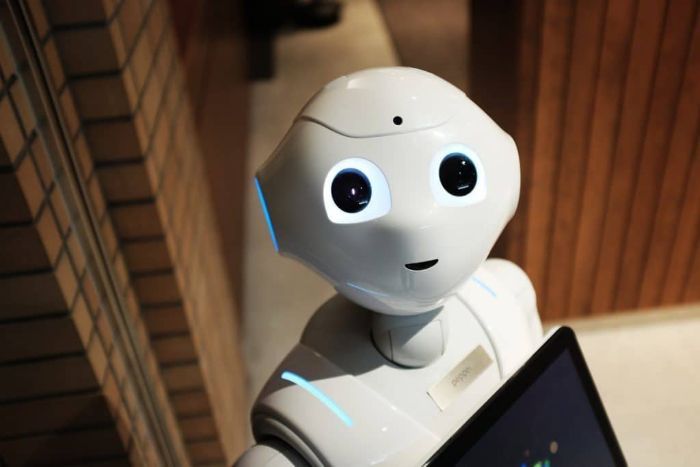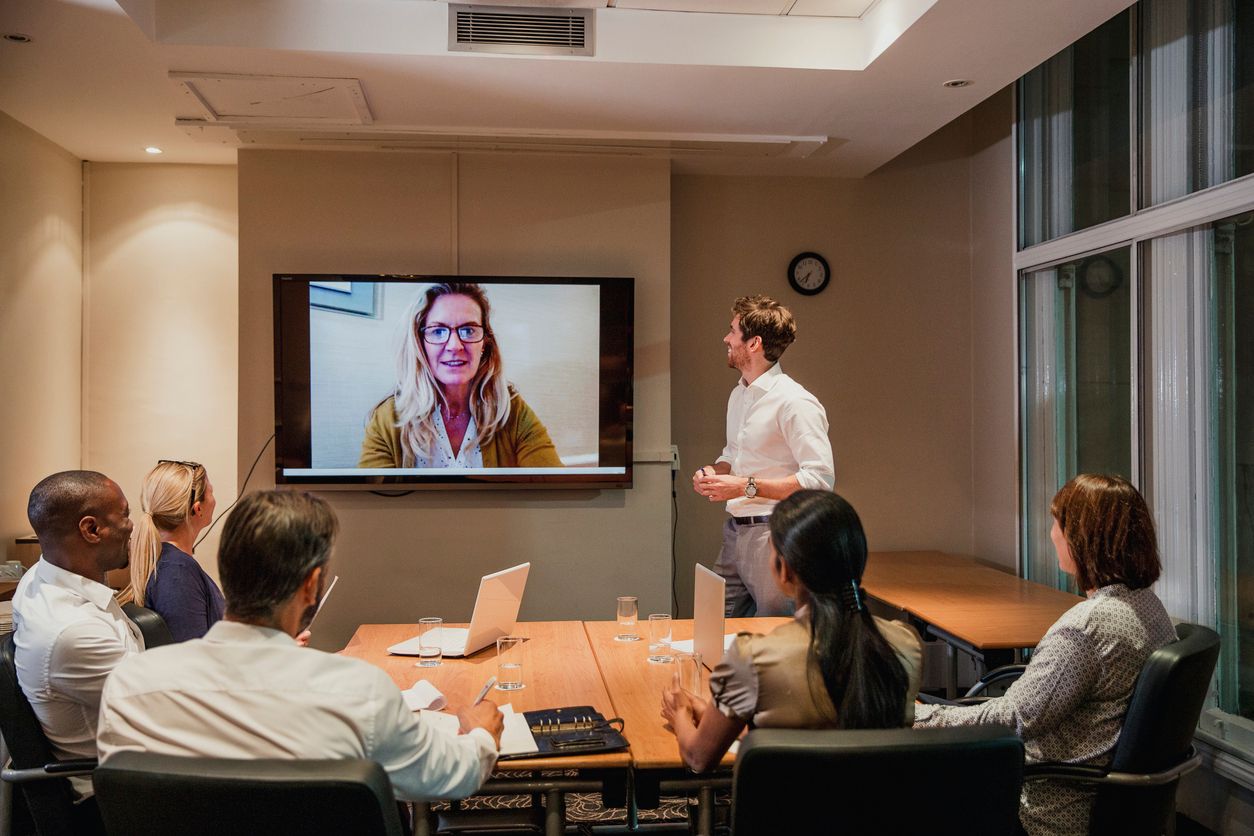Here’s a modern recruitment riddle.
Can you name something that increases efficiency, improves the customer experience, and even reduces costs?
Something that will streamline recruiting tasks, and something your competitors may already be using?
If you said ‘chatbots,’ you nailed it!
The Chatbots are coming
While chatbots are relatively recent technology, they’re already simplifying the lives of professionals everywhere. And across all business sectors they’ve already been shown to save organisations a packet.
- Chatbots can save up to 4 minutes – per customer – compared to using the phone.
- According to this report, chatbots reduced annual business costs by £15 million in 2017.
- By 2022, chatbots may potentially lower business costs by £6 billion annually.
Despite this, only 5% of companies worldwide were using chatbots regularly in 2016 while a paltry 5.6% of UK and Ireland agencies are considering the addition in 2018.
In a survey by Oracle, 80% of businesses in France, the Netherlands, South Africa and the UK are intending to incorporate automation technology by 2020.
Global companies leveraging the technology for their organisations include British Airways, eBay, Google, Amazon, Facebook, Microsoft, Sephora, Marriott, and Coca-Cola.
Recruitment lags behind. It’s no secret that HR teams still focus 70% of their time on administrative and transactional HR activities.
The result? Only 30% of time to focus on high-value human capital work like HR strategy and talent and performance enhancement.
Meanwhile, chatbots are quietly revolutionising cutting-edge recruitment, making things easier for HR by eliminating much of the heavy-lifting and repetitive tasks.
Currently, the average cost per hire for companies is around £3,142 and the average time to fill a position is 42 days. Some chatbots can reduce hiring time by 80% – from around two months to two weeks.
There are a myriad of ways that chatbots can up your recruiting game, but before elaborating, let’s have a look at the technical nitty gritty.
Two types of Chatbots
Chatbots work in one of two ways. Some are simple and limited in their applications while others use AI and advanced machine learning to continue to evolve.
1. Decision tree or scripted chatbots follow a simple set of pre-programmed rules to give predictable answers and can only answer questions for which they were prepared. If a scripted chatbot encounters a question it doesn’t know, it won’t be able to answer it.
a. Examples are Facebook Messenger, Kik, WeChat, and Slack. These types of chatbots are only capable of interacting with users following a specific set of rules.
2. A.I or intelligent chatbots understand the meaning of language and complex requests. They can carry on conversations with humans using advanced machine learning and can personalise responses and improve interaction over time. Questions asked to intelligent chatbots don’t have to be specific; they relate and link ideas using the power of machine learning.
a. Examples are Apple’s Siri, Microsoft’s Cortana, Amazon’s Alexa and Google’s Assistant. These rely completely on artificial intelligence to learn and answer any questions asked.

Adiós Tedious Tasks!
Chatbots are the dream assistant for the busy recruiter, taking on all the heavy-lifting and boring jobs and doing them efficiently, in bulk!
An effective chatbot will make your life easier and speed up your hiring process. A whopping 80% of recruiters believe that sourcing and testing should be automated. And 52% of talent acquisition leaders report that the hardest part of recruitment is identifying the right candidates from a large applicant pool.
Not only can a chatbot strip out bad candidates or perform fact-finding to aid report building, they are your willing helper, always on the go.
Here are some key advantages;
- A chatbot is there for every step of the employee lifecycle, providing a constant touch-point for high levels of employee engagement, which is something 38% of HR respondents claim is the primary challenge they face.
- Chatbots provide support 24/7 (and handle multiple customers simultaneously) cutting the amount of time HR spends on requests by 30 to 50%.
- Recruitment automation can qualify CVs, conduct first-stage interviews and check work eligibility, cultural fit, experience, work availability, and run background checks. A chatbot will also eliminate duplicate profiles, schedule interviews, and set up reminders.
- Streamline the onboarding process by providing all the required information. Chatbots can arrange security passes, set up payroll formalities, network passwords, provide forms to fill, and request documentation.
- With a chatbot, there’s no unconscious bias when recruiting, meaning more workplace diversity.
- A chatbot will simplify the offer acceptance process.
- No need to pay for a support team.
- Employee questions are answered almost instantly (e.g. absence or holiday requests or expense claims.) Chatbots can give status updates, and provide a non-threatening means of reporting misconduct.
- Collect employee feedback and enhance the level of employee service, something 92% of recruiters claim will be a crucial chatbot task.
- Prepare annual performance reviews with surveys, questionnaires etc.
- Capture data in real-time and quickly suggest, sell or upsell the correct products or services.
Many everyday recruitment and HR chores are easily transferable to a chatbot. Some chatbots claim they can automate as much as 75% of a company’s recruiting process. And Gartner predicts 85% of all customer service interactions will be automated by 2020.
Further evidence that hiring professionals could use some automated help can be found with those unfortunate applicants that fall through the cracks — 43% of candidates never hear back from a company after one touch-point.
But that’s just the applicants who get to the finish line. 74% of candidates don’t even complete the application process!
A chatbot deals with cumbersome hiring tasks while improving the customer experience. You’ll save yourself crucial time to focus on building relationships – one thing automation can’t do.
The Missing Human Touch
Chatbots are wonderful solutions to overworked HR professionals everywhere but they’re limited. While they do make the hiring process easier, they can never replace the human touch.
- Many hiring tasks can be automated, but not all! Key elements such as social interaction, empathy and negotiation aren’t going to happen with a chatbot.
- They can’t understand non-standard text — e.g. slang, short form, incorrect spellings or emojis.
- Recruiting automation can’t build rapport with the candidate.
- They’re programmed to learn responses based on previous interactions so aren’t capable of solving new problems that arise.
- They can’t gauge emotions or listen for subtle clues to identify their motivators.
- Chatbots cannot successfully conduct cognitive interviews with open-ended questions.
- They’re not capable of hiring roles that require high emotional intelligence.
Tech is growing smarter everyday, but there is no algorithm that can top real human interaction.

The Future is Here
Still, chatbots are the new reality. In one survey of 200 candidates, 58% were comfortable interacting with chatbots in the early stages of the application process while 66% were happy using recruitment automation for interview scheduling and preparation.
But the technology isn’t seamless. Too many people — 73% of consumers – can tell whether their last customer service interaction was with a human or a chatbot.
A massive 82% often feel frustrated by an overly automated experience, and 87% agree that technology has made the job search process more impersonal.
However, average open rates for bot messages are an impressive 80% to 90%, compared to email open rates of just 20% to 30% overall.
Nevertheless, recruitment automation is here to stay. For consumers, familiarity and increased efficiency are paving the way to acceptance.
The Bottom Line
Chatbots speed up the first stages of hiring, bringing the human interviewer and the candidate together sooner. And recruitment automation can — and does — save early adopters a lot of money.
But chatbots can only go so far. Human resources and recruitment are people-centric and always will be.
The sooner we realise that the skills of chatbots do not match those of the human brain, the sooner we can embrace this technology.
Think of chatbots as your automated virtual assistant, your best friend.
Chatbot technology will never replace hiring.
It will redefine it.



![How to Hire a Remote Software Developer [ Step-by-Step Guide ]](/content/images/2022/04/iStock-1163541557.jpg)
![9 Zoom Interview Questions to Ask Software Engineers [ Recruiter´s Guide ]](/content/images/2022/04/iStock-1319790212.jpg)
![What is the Average Software Developer Salary? [ For Startups ]](/content/images/2022/03/iStock-1017296544.jpg)
